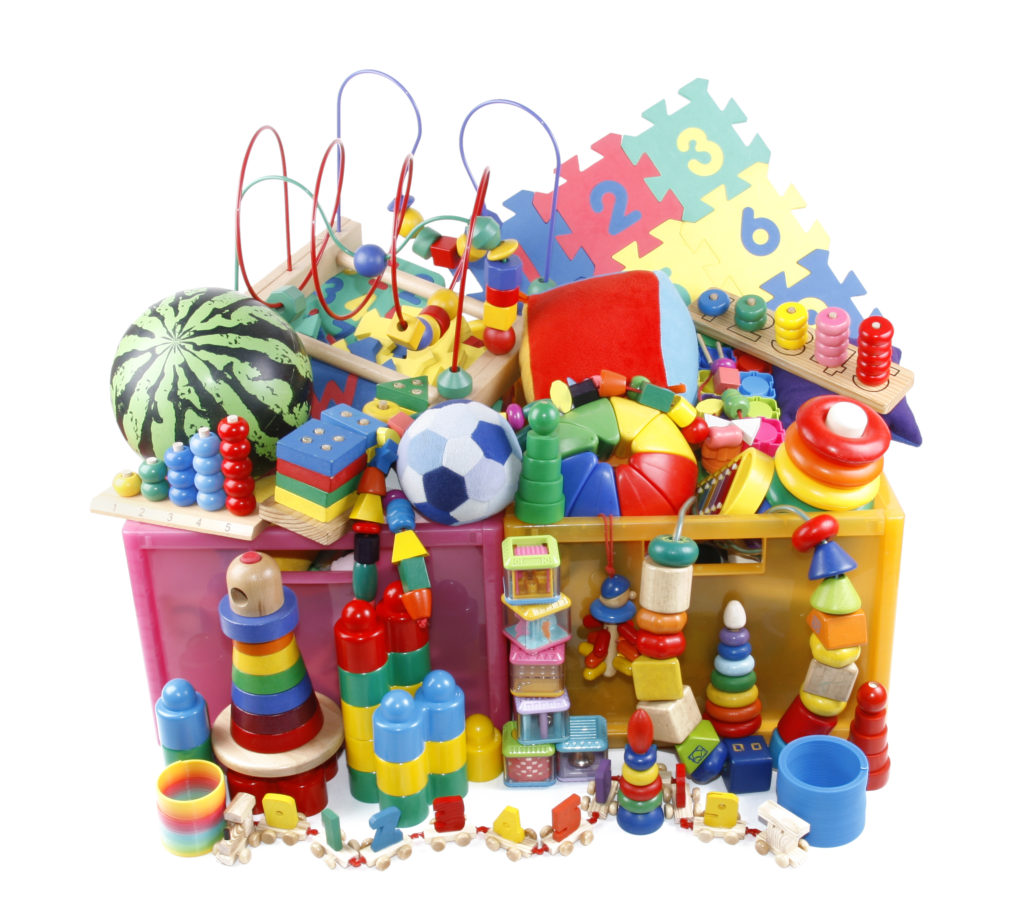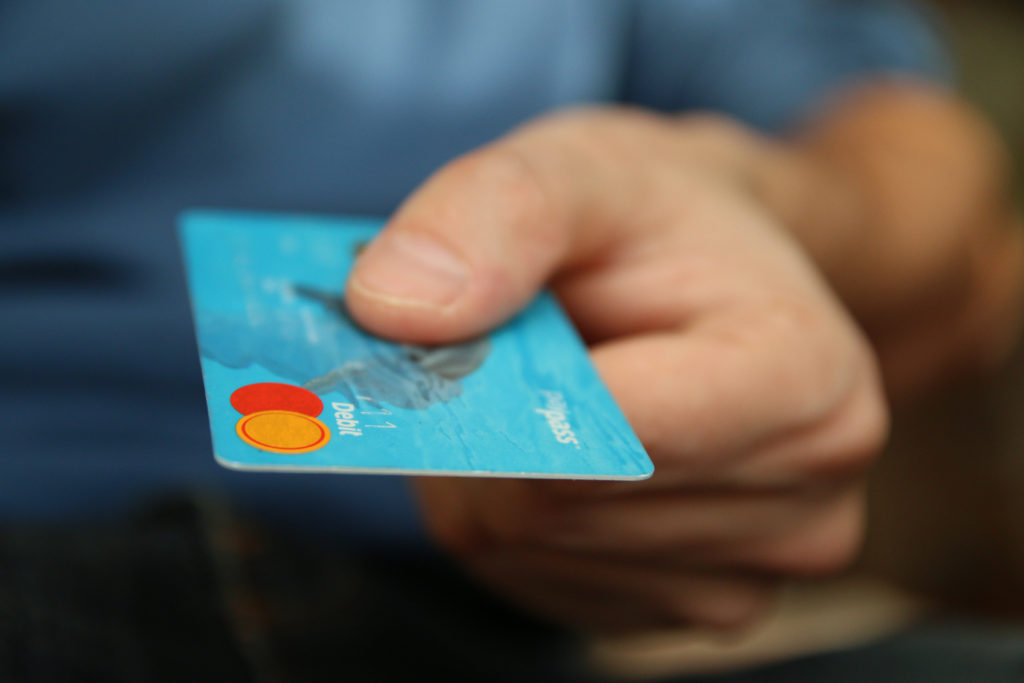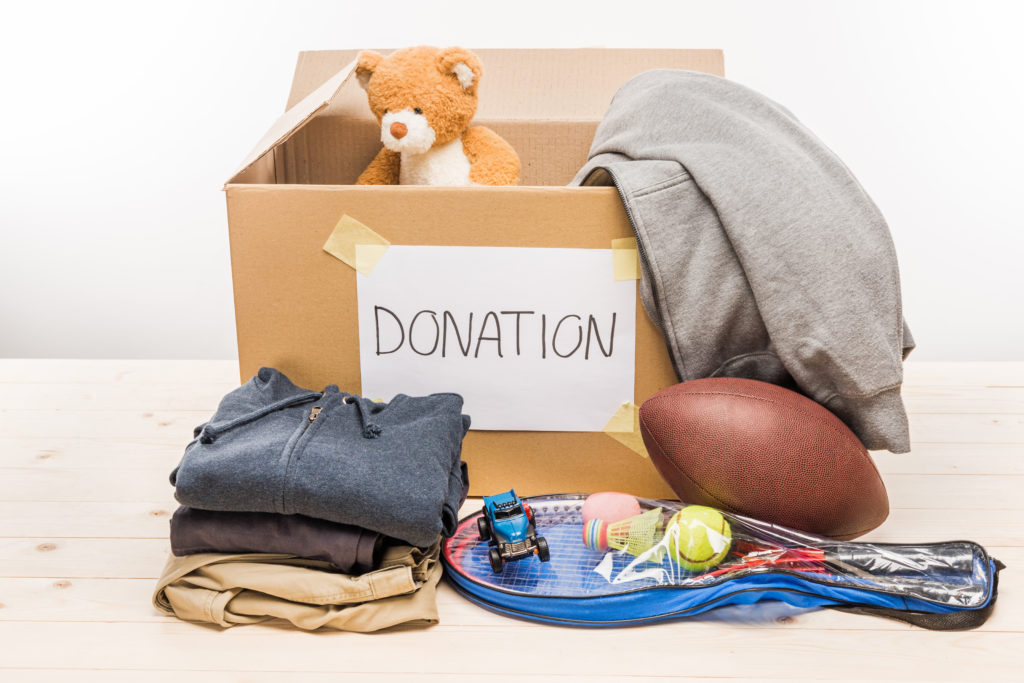“My kids have too much stuff.”
“I have too much stuff.”
We all say it, don’t we?
I live in a 2 bedroom, 1000 sqft house with my husband, 2 kids, and 2 dogs. And yes, too much stuff. I can go over 3 weeks without doing laundry. I can’t fit my car in the garage. And between the dogs toys and my kids toys, I can rarely go from the kitchen to the living room, which isn’t that far, without stepping on or tripping over something.

The Physical Implications
It’s not just me. According to the The Telegraph in the UK, “a typical child owns 238 toys in total, but play with just 12 daily.” Talk about too much stuff! The average child plays with just 5% of their toys daily. I mean, in reality, I don’t need an article to tell me that, right? My toddler has a book case filled to the nine but pulls out the same rotating dozen books every week. He also has his favorite motorcycles amidst the forgotten construction trucks; his favorite train tracks in preference over the mega blocks; and more balls than he could ever possibly want, but he can only play with a maximum of about 2 at any given time – lately his preference has been a Frisbee anyways.
This reminded me of a blog post I read awhile back, over at Living Well Spending Less, where the author Ruth, got so fed up she took all her kids toys away. The article is a pretty controversial one, but her point boiled down to the fact that without the toys, her kids were far more creative than she ever could have imagined. They also were able to reach a point of contentment and appreciation, traits that are difficult to teach our children. Most toys today are crutches, leading and directing rather than fostering creativity.
And yet, research has shown, materialism – more money, and as a byproduct, more stuff – is linked with insecurity, unhappiness, depression and anxiety and is even correlated with unhappiness in marriage.

The Financial Implications
Speaking of toys being crutches, have you ever gone down the Lego aisle of Target? There are rows on both sides of specific Lego action figures and scenes, and yet, maybe if you are lucky you might find one box of old plain Legos with no design behind it, the only that allows kids to endlessly play and explore their creativity. Products are designed to get you back in the store, back to spending more money on their products.
All those Legos and Target runs (because who can actually spend less than $100 on a trip to Target) can quickly lead to debt. At the time of this writing, according to Lendingtree, 41% of all American households carry some sort of credit card debt, the average being $9000. If you are lacking money skills, or find yourself compulsive by nature, you probably also have too much stuff (and vise versa). Interestingly, our materialistic tendencies not only contribute to a more credit card debt, but also to a higher mortgage. Which makes sense, if you think about it. The typical expected reaction to my own problem of too much stuff is to buy a bigger house. Except a bigger house means a bigger price tag, which means a bigger mortgage.

The Environmental Implications
I was reading an article the other day that shared a study revealing 3.1% of the world’s children live in America, but they own 40% of the toys consumed globally. This suggests that not only do we have too much stuff, but that we are also producing too much stuff!
As demand increases, the need to produce increases. This leads to more pollutant emissions, increased land-use and deforestation, and accelerated climate change. We have over twice as many cars as we did 50 years ago, which comes with more pollution, more traffic and more use of fossil fuels. According to scientists, up to 12 billion tons of plastic enters the ocean every year, resulting in giant floating garbage patches all over the world. Single-use disposable diapers account for more than 3.5 million tons of waste, and take 500 years to decompose in a landfill. Gosh, I could go on, but I think you get the picture. Our desire and ingrained compulsion for material possessions is having a direct affect on our environment.

What can we do about it?
Our society encourages consumerism at every turn. It thrives off advertisements, shopping, and just buying. Does that mean we are all doomed by societal pressures and norms relating to consumption? Of course not! There are several things we can do to slow down our consumption and decrease our possessions.
First off, we need to see it and recognize it. Recognize an advertisement for exactly what it is: a ploy to get you to part with your hard-earned dollars. Once you can see that, it is far easier to look at it with an outside eye and say no.
Some other things you can do:
- Pay attention to quality over quantity. Things built with quality lasts longer and doesn’t need replacing as frequently.
- Take care of your things. Being organized and taking care of what you own decreases the likelihood of having to buy something because you’ve lost it or it’s broken.
- Find a local Buy Nothing Group. The Buy Nothing Project is dedicated to re-purposing things you no longer need to others who do. It is a wonderful community.
- Declutter possessions you don’t find useful, love, or have an active need for.
- Use re-usable whenever possible. An obvious example is re-usable bags when shopping (and not just at the grocery store). However, there are other ways to avoid one-use things: for example, some establishments let you bring your own containers for dinner leftovers.
- Pay attention to your financial values, and stop buying what isn’t important to you.
- Implement a 24-hour rule on anything you want to buy to avoid impulse purchases.
- Practice gratitude and mindfulness toward your current possessions.
So yes, you have too much stuff. And in terms of materialism, the best way to increase your happiness and financial wealth, and put less in the landfills, is to just not buy in the first place. My son certainly won’t notice – he’ll get home from daycare today and immediately run to his bike, the same thing he does every day. If we all individually take small steps today, collectively we can work towards lowering the demand for consumer products and, one day, we won’t be plagued with too much stuff.

Michele is the fun-loving, easy going, project managing, financial savvy author behind the Balancing the Books of Life blog. She invites other moms to come along her journey to both become financially independent and spend time on things they love!


Leave a Reply